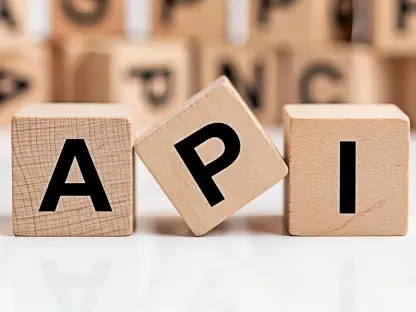Introduction to No-Code AI and Opal’s Global Reach
In an era where technology is reshaping every facet of business and daily life, a staggering statistic emerges: over 80% of small businesses lack the resources to hire dedicated developers for custom software solutions, fueling the rise of no-code AI development. This industry is dedicated to empowering non-technical individuals to create applications without writing a single line of code. At the forefront of this revolution stands Google’s Opal, a pioneering tool launched by Google Labs that has now expanded to over 160 countries as of this year. This global rollout marks a significant milestone in making advanced technology accessible to a broader audience.
No-code AI platforms like Opal are transforming the landscape by democratizing access to artificial intelligence, allowing users ranging from entrepreneurs to educators to harness AI for automation, data analysis, and more. Opal leverages natural language prompts to build mini-apps, eliminating the need for coding expertise and opening doors for innovation across diverse sectors. This accessibility addresses a critical need in today’s fast-paced digital environment, where speed and adaptability are paramount.
The significance of Opal’s expansion cannot be overstated. By breaking down technical barriers, it enables individuals and organizations in varied economic contexts to solve complex problems with tailored AI solutions. This move by Google underscores a broader mission to foster inclusivity in technology, positioning Opal as a catalyst for global creativity and productivity.
The Rise of No-Code Platforms and Opal’s Position
Key Trends in No-Code Development
The no-code and low-code development sector is experiencing unprecedented growth, driven by the urgent demand for rapid application creation and prototyping. Businesses and individuals increasingly seek tools that can deliver functional software in hours rather than months, a need that platforms like Opal address with remarkable efficiency. This trend reflects a shift toward agility in problem-solving, as users prioritize speed without sacrificing functionality.
Emerging technologies, particularly natural language processing powered by advanced models such as Google’s Gemini, are central to this evolution. These capabilities allow users to describe their needs in plain English, with the platform translating those inputs into working applications. Such advancements are reshaping how technology interacts with human intent, making AI a practical tool for everyone, not just experts.
Additionally, user needs have diversified, spanning small businesses looking to automate workflows, educators designing learning aids, and even hobbyists experimenting with personal projects. No-code tools cater to this wide array of demands by offering intuitive interfaces and customizable outputs. Opal, with its user-centric design, exemplifies how the industry is adapting to serve a global, heterogeneous audience.
Market Growth and Competitive Landscape
The no-code market is on a steep upward trajectory, with industry reports projecting significant expansion from this year through 2027. Adoption rates are soaring as more organizations recognize the cost-effectiveness and scalability of these platforms, especially for creating minimum viable products. This growth signals a fundamental change in software development, where accessibility often trumps traditional coding approaches.
In this competitive arena, Opal stands out due to its seamless integration with Google’s ecosystem, including tools like Sheets and Docs, alongside a free tier that lowers entry barriers. Compared to rivals such as Bubble, Adalo, Microsoft Power Apps, and Zapier, Opal benefits from Google’s robust infrastructure, offering users a familiar environment to build and deploy solutions. This synergy gives it a distinct edge in appealing to both individual creators and enterprises.
Looking ahead, no-code tools are poised to redefine global software development by shifting the focus from technical expertise to creative problem-solving. As more regions embrace these platforms, the market will likely see intensified innovation and collaboration. Opal’s strategic positioning suggests it will play a pivotal role in this transformation, potentially setting new standards for accessibility and utility.
Challenges in Scaling No-Code AI Tools Like Opal
Scaling a tool like Opal to a global audience presents notable hurdles, particularly in areas such as data privacy and the reliability of AI-generated outputs. In regulated industries like healthcare and finance, concerns over how user data is stored and processed remain paramount, especially as different countries enforce varying compliance standards. These issues pose risks to user trust and adoption rates.
Beyond regulatory challenges, users often encounter a learning curve when crafting effective prompts to achieve desired results with Opal. While the platform aims for simplicity, the nuances of communicating intent to AI can be daunting for beginners. Additionally, limitations in language support across newly entered regions hinder its effectiveness for non-English speakers, creating disparities in accessibility.
Google is actively addressing these obstacles through continuous updates and by incorporating user feedback to refine Opal’s functionality. Efforts to enhance multilingual capabilities and strengthen data security protocols are underway, aiming to mitigate regional disparities and build confidence among users. Such proactive measures are essential for ensuring the platform’s sustained relevance on a worldwide scale.
Regulatory and Ethical Considerations for Global AI Tools
The regulatory landscape for no-code AI platforms is complex, with data protection laws varying significantly across jurisdictions. Compliance with frameworks like the European Union’s GDPR or similar mandates in other regions requires meticulous attention to how data is handled and stored. For a tool like Opal, navigating these legal intricacies is crucial to maintaining operational legitimacy internationally.
Ethical concerns also loom large, particularly regarding potential biases in AI models that power no-code tools. Transparency in how data is used and how outputs are generated becomes a critical factor in fostering user trust. There is a pressing need to ensure that AI accessibility does not inadvertently perpetuate inequities or inaccuracies in application development.
Google is taking steps to align Opal with global standards by prioritizing ethical AI practices and enhancing transparency in its operations. Initiatives to audit algorithms for bias and provide clear guidelines on data usage are part of this commitment. These efforts aim to position Opal as a responsible player in the AI space, balancing innovation with accountability.
Future Outlook for Opal and No-Code AI Innovation
The trajectory for Opal and the broader no-code AI industry appears promising, with potential advancements in AI models likely to enhance functionality over the coming years. Deeper integrations with Google services could further streamline workflows, making the platform an even more integral part of daily operations for users worldwide. Such developments would solidify its utility across diverse applications.
Emerging opportunities in developing economies present a significant frontier for Opal’s growth. By providing affordable, accessible AI solutions, the platform can empower local entrepreneurs to address region-specific challenges, from agriculture to education. This grassroots adoption could spark a wave of innovation, driving economic progress in underserved markets.
Global economic conditions, technological breakthroughs, and user adoption trends will undoubtedly shape Opal’s long-term success. As AI literacy grows and economic needs evolve, the demand for intuitive tools will likely intensify. Opal’s ability to adapt to these dynamics, while maintaining user-centric design, will determine its enduring impact on the no-code landscape.
Conclusion and Implications of Opal’s Global Expansion
Reflecting on the journey of Opal’s expansion, it becomes evident that its reach into over 160 countries marks a turning point in democratizing AI through no-code development. The platform’s strengths in simplicity and integration with Google’s suite stand out, despite challenges like privacy concerns and user learning curves. Its competitive stance in a crowded market underscores Google’s strategic vision for inclusive technology.
Moving forward, actionable steps emerge as critical for sustaining this momentum. Google needs to prioritize robust data security measures and expand language support to bridge regional gaps. Collaborating with local stakeholders in developing economies could further tailor Opal to unique needs, fostering deeper penetration.
A final consideration points toward continuous innovation in AI capabilities as a pathway to maintaining relevance. By investing in user education and ethical AI practices, Google can ensure that Opal not only empowers creators but also sets a benchmark for responsible technology deployment. These steps promise to amplify Opal’s role in shaping a future where AI is truly accessible to all.









